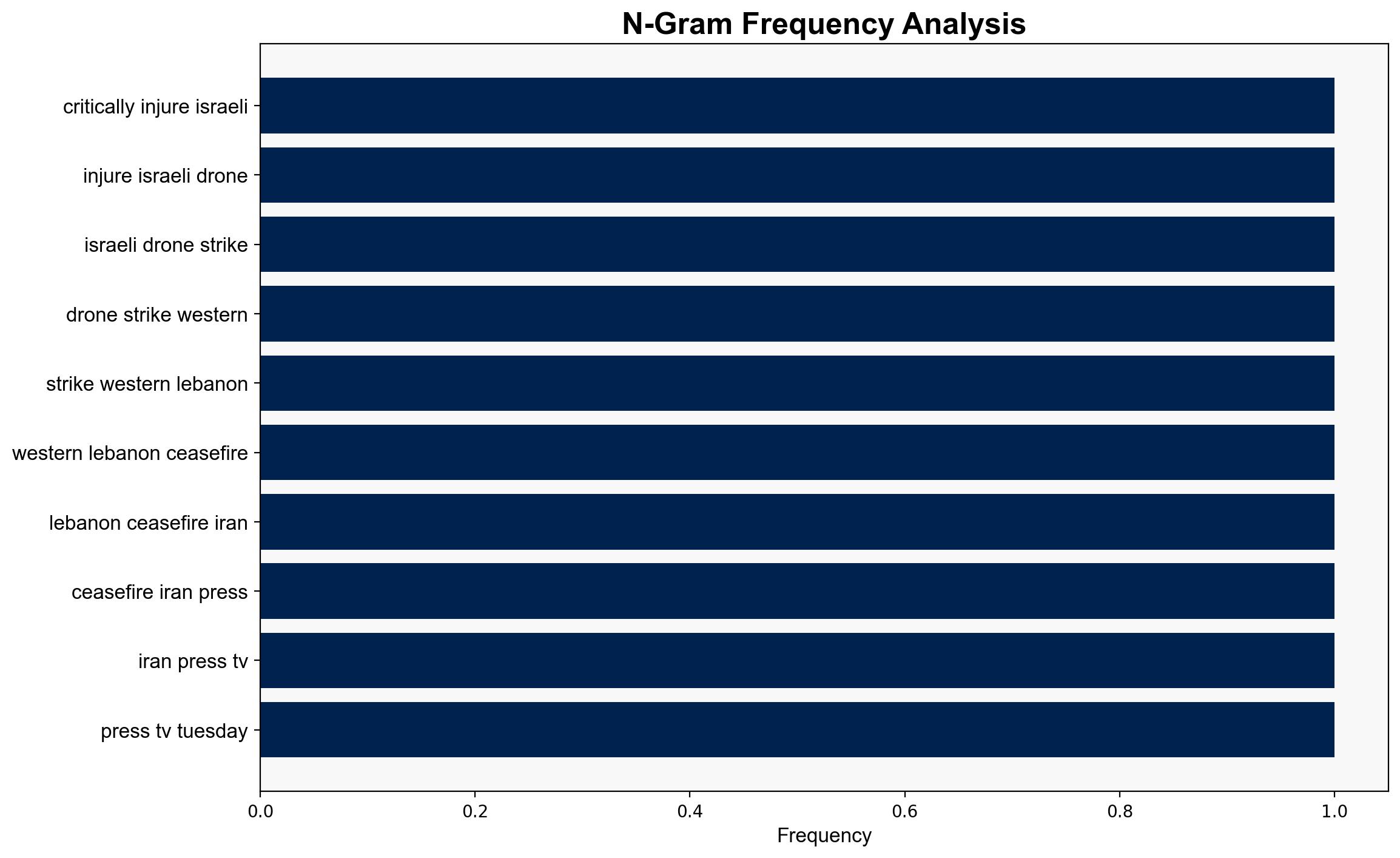One critically injured after Israeli drone strikes western Lebanon despite ceasefire – Globalsecurity.org
Published on: 2025-09-10
Intelligence Report: One critically injured after Israeli drone strikes western Lebanon despite ceasefire – Globalsecurity.org
1. BLUF (Bottom Line Up Front)
The most supported hypothesis is that the Israeli drone strike in western Lebanon is part of a broader strategy to weaken Hezbollah’s military capabilities amidst ongoing regional tensions. Confidence in this hypothesis is moderate due to the complexity of regional dynamics and the potential for misinformation. Recommended action includes diplomatic engagement to reinforce the ceasefire and intelligence sharing to clarify intentions and reduce escalation risks.
2. Competing Hypotheses
1. **Hypothesis A**: The drone strike is a deliberate Israeli military action aimed at disrupting Hezbollah’s operations in Lebanon, despite the ceasefire, as part of a broader campaign to neutralize perceived threats.
2. **Hypothesis B**: The strike was a miscalculation or error, possibly due to faulty intelligence or miscommunication, inadvertently violating the ceasefire agreement.
Using the Analysis of Competing Hypotheses (ACH) 2.0, Hypothesis A is better supported by the pattern of ongoing Israeli airstrikes and historical context of Israeli-Hezbollah tensions. Hypothesis B lacks substantial evidence but cannot be entirely dismissed due to the complexities of military operations.
3. Key Assumptions and Red Flags
– **Assumptions**:
– Israel perceives Hezbollah as a significant threat necessitating preemptive actions.
– The ceasefire is fragile and subject to violations by both parties.
– **Red Flags**:
– Lack of independent verification of the strike’s target and intent.
– Potential bias in media reporting, particularly from sources with vested interests.
4. Implications and Strategic Risks
The incident risks escalating tensions between Israel and Hezbollah, potentially drawing in regional actors and complicating peace efforts. There is a risk of retaliatory actions by Hezbollah, which could destabilize the region further. Economically, continued conflict could deter investment and exacerbate humanitarian issues in Lebanon. Cyber and psychological operations may intensify as both sides seek to control narratives and influence public perception.
5. Recommendations and Outlook
- Engage in diplomatic efforts to reaffirm the ceasefire and establish communication channels to prevent misunderstandings.
- Enhance intelligence-sharing mechanisms among regional and international partners to improve situational awareness.
- Scenario-based projections:
- Best: Ceasefire holds with increased diplomatic engagement.
- Worst: Full-scale conflict resumes, involving multiple regional actors.
- Most Likely: Sporadic violations continue, with intermittent diplomatic interventions.
6. Key Individuals and Entities
– Sayyed Hassan Nasrallah
– Hezbollah
– Israeli military
7. Thematic Tags
national security threats, regional conflict, ceasefire violations, Hezbollah-Israel tensions





